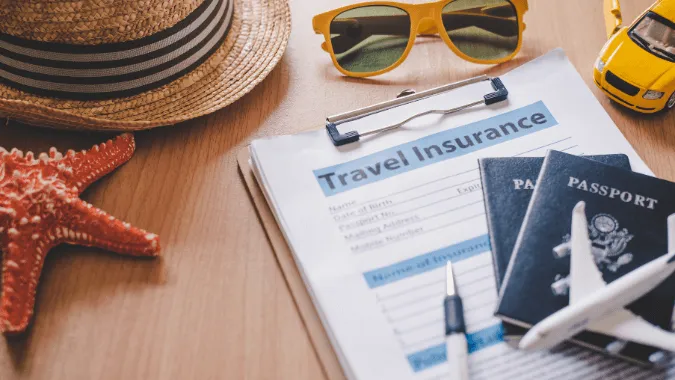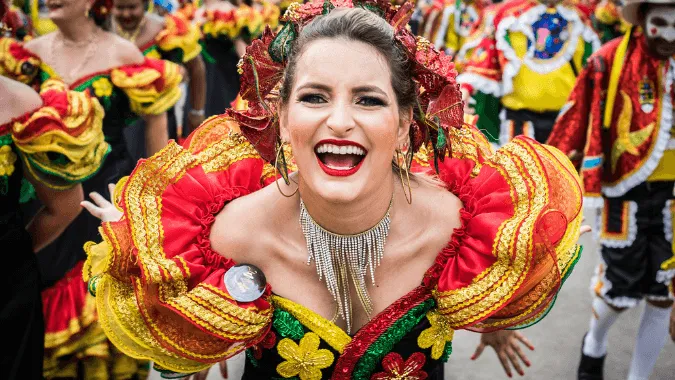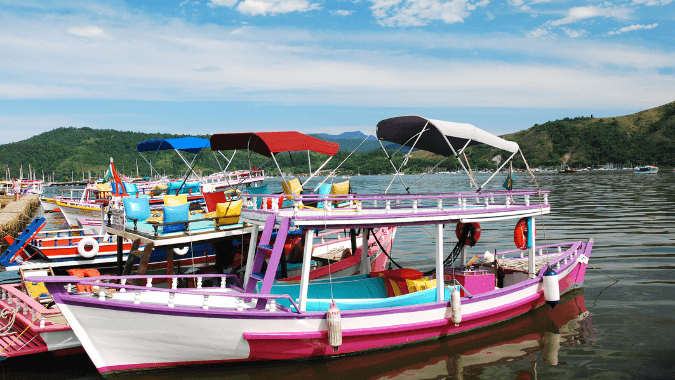Colombia
The Complete Guide to Getting Around Colombia
Tags:
travel in colombia
transport in colombia
Colombia is not a small country. Ranked the 26th largest country in the world, the country stretches across from the Pacific to the Caribbean Coast, with the Andes mountain range and Amazon jungle in between. With all this diversity and size, travellers should be aware of the large distances between places, and the added difficulty of negotiating mountainous and tropical terrain. When planning your Colombian itinerary, make sure to account for these distances by planning your journey carefully. To help you navigate this incredible South American country, here is a breakdown of the available types of transport in Colombia and tips on getting around safely.
When travelling within Colombia, the best option for getting around depends on your time and budget constraints. The website Undertrail is a good place to start, as it compares the prices of airlines and bus companies, giving you an easy way to make a time-cost comparison.
![By Colombia_relief_location_map.jpg: Grundkarte Shadowxfox, Relief Alexrk2 derivative work: Bourrichon (Colombia_relief_location_map.jpg) [CC BY-SA 3.0 (http://creativecommons.org/licenses/by-sa/3.0)], via Wikimedia Commons map]() The distances between destinations in Colombia are colossal / Image Source
The distances between destinations in Colombia are colossal / Image Source
TRAVELLING BY AIR
When travelling long distances within the country, such as from Bogotá to the Caribbean coast, flying is the most attractive form of transport in Colombia. Stiff competition between Colombia’s domestic airlines has driven prices down, and you can now find flights at similar prices to bus tickets. Airlines include the national carrier, Avianca, regional airline Satena, Panama-based Copa, low-cost carrier Easy Fly which services some of the country’s smaller cities and destinations, LAN Colombia, and the new kid on the block, Medellín-based low-cost carrier, VivaColombia.Tips:
If you take VivaColombia, you need to check in online 4 hours before or there is an additional charge. Also, pay careful attention to baggage restrictions - there are a number of additional charges if you don’t follow the guidelines. Some domestic carriers do not accept international credit cards when paying online. Most airports have windows for major airlines with consultants that speak English.![2-1]() The national carrier Avianca has regular flights across the country / Photo by Daytours4u
The national carrier Avianca has regular flights across the country / Photo by Daytours4u
BUS TRAVEL
Bus travel is the cheapest way to travel within Colombia. But remember that it is not the fastest. The trip between Bogotá and Cartagena, for example, is approximately 23 hours. Keep in mind that the service varies according to the company operating the route. When booking, stick to reputable bus companies such as Expreso Brasilia, Rapid Ochoa, Expreso Bolivariano, Copetran and Berlinas del Fonce. You generally don’t need to book in advance. Of course, the most iconic bus in Colombia is the chiva. These colourful wooden buses, used for public transport, have become more iconic as party buses, particularly on the Caribbean coast. While you won’t be travelling between cities in them, make sure you have at least one rumba in a chiva.Tips:
If you book at the bus terminal, don’t be overwhelmed by hordes of people trying to sell you tickets. Ignore them and head for the company of your choice to buy a reliable ticket. On long distance journeys, the air conditioning is usually on full blast. Make sure you bring something warm with you to combat the cold on the bus. People are also not prone to sitting in their assigned seats, so it’s good to get to the bus stop early to claim your space. Long distance buses are comfortable with spacious seats, restrooms, and wifi. When your luggage is loaded, it is tagged and you are given a ticket. Keep this with you to reclaim your bags.![3-1]() The chiva, once Colombia's main mode of road transportation, is now a party bus / Image Source
The chiva, once Colombia's main mode of road transportation, is now a party bus / Image Source
DRIVING IN COLOMBIA
The other option to get around the country is by driving yourself. Car hire is expensive and the roads can be dangerous, with bad driving, roadworks, and mudslides when it rains. So think carefully about this option. Also be aware that you should stick to national highways and avoid rural areas. It is best to drive only in the daylight. While Colombia is much safer than it used to be, there are still incidents involving drug cartels, particularly in rural areas.Tips:
You don’t need an international driving license to drive in Colombia. Your license from your home country will suffice. If you head to the Coffee Triangle, or any other mountainous area, the most iconic vehicle is the Willys Jeep. A staple in these regions of Colombia, this trusty 4x4 is the best way to navigate the hills and valleys.![4-1]() A Willys Jeep is the most iconic mode of transport in the Coffee Triangle / Image Source
A Willys Jeep is the most iconic mode of transport in the Coffee Triangle / Image Source
TRANSPORT WITHIN CITIES
Each city has its own transport network, such as Bogotá’s Transmilenio bus system, and Medellín’s Metrocable. You can also hail a regular taxi or a motorcycle taxi. With taxis, each city has its own system. In most places, there is a normal meter system. In Bogotá, taxis use the meter in conjunction with cost bands. To work out the cost, you need to consult the conversion table in the taxi. In Cartagena, no meters are used, so you need to negotiate the price before starting your journey.Tips:
Taxi crime is a problem in Bogotá and other cities in Colombia. To be safe, always call for a taxi from a reputable company, rather than hailing one in the street. This is especially important at night. If your Spanish is not good, or you prefer to use technology, you can use an app to call a taxi. Simply download an app like Easy Taxi, Tappsi or Uber and use it to hail a cab. If you have a good experience with a taxi driver, ask him/her if he/she would offer you a personal service. It helps to have a reliable person that you can call personally to take care of all your driving needs around the city.![5-1]() Medellin's Metrocable is a great way to see the city / Image Source
Medellin's Metrocable is a great way to see the city / Image Source
When travelling within Colombia, the best option for getting around depends on your time and budget constraints. The website Undertrail is a good place to start, as it compares the prices of airlines and bus companies, giving you an easy way to make a time-cost comparison.
Once you’ve worked out where you’re going and how to get around Colombia, it’s time to start planning your activities. Visit our website for the best tours in Colombia!
Tags:
travel in colombia
transport in colombia
Search
-
Exciting 4x4 route: São Luís and FortalezafromUS$1,014
-
Vila Gale Mares Resort All InclusivefromUS$100
-
Ecotourism in Chapada DiamantinafromUS$672
-
All inclusive Vila Gelé Cumbuco ResortfromUS$999
-
Full Day Cafayate Tour from SaltafromUS$68
-
Transfer Aeroparque - Buenos AiresfromUS$46
-
-
Transfer Ezeiza - AeroparquefromUS$91
-
-
Excursion to El Chaltén from El CalafatefromUS$153
-
-
-
-
-
-
-
-
-
-
-
Daytours4u © 2012-2019. Use of this website constitutes acceptance of the Terms & Conditions.
Open Chat
Hello, How May I Help You?

![By Colombia_relief_location_map.jpg: Grundkarte Shadowxfox, Relief Alexrk2 derivative work: Bourrichon (Colombia_relief_location_map.jpg) [CC BY-SA 3.0 (http://creativecommons.org/licenses/by-sa/3.0)], via Wikimedia Commons map](https://travel-guide.daytours4u.com/wp-content/uploads/sites/2/2015/08/map.jpg)






